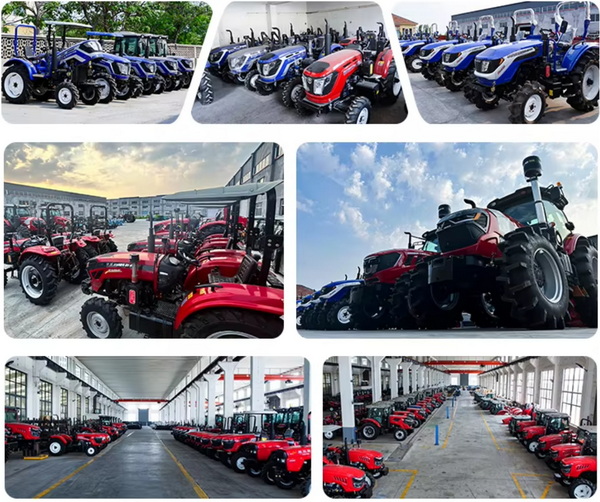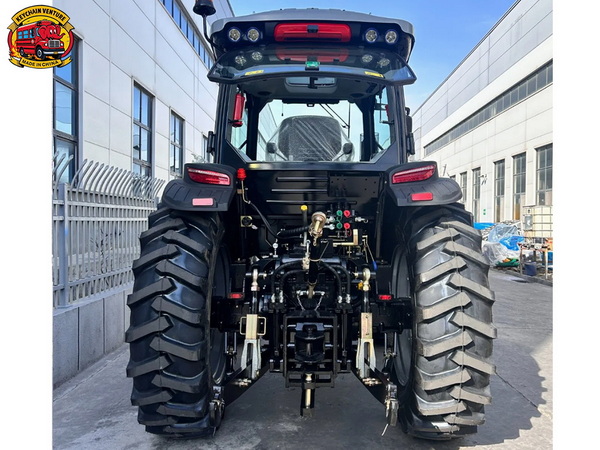Views: 222 Author: Amanda Publish Time: 2025-11-17 Origin: Site








Content Menu
● Understanding Tractor Generators
>> Major Components in Tractor Generators
● Safety Precautions for Generator Testing
● Essential Equipment and Tools
● Step-by-Step Process for Testing Tractor Generators
>> Load Testing
>> Diode and Rectifier Inspection
● Advanced Troubleshooting for Tractor Generator Problems
● Preventive Maintenance for Tractor Generators
● Best Practices for Tractor Generator Testing
● Importance of Generator Reliability in Tractors
>> 1. Why is my tractor generator not charging the battery?
>> 2. How often should tractor generator output be tested?
>> 3. What is the correct multimeter setting for tractor generator tests?
>> 4. Can worn belts cause tractor generator failure?
>> 5. Does my tractor warranty cover generator repairs?
Tractors are the backbone of agricultural, industrial, and commercial operations, providing the power and versatility needed for demanding tasks. At the core of many tractors is the generator—a vital component that supplies electricity to essential systems such as lighting, control modules, instrumentation, and additional accessories. Regularly testing the generator is critical for ensuring uninterrupted tractor performance, safe operation, and longevity on both domestic fields and international jobsites. This detailed guide offers step-by-step instructions, expert tips, common troubleshooting solutions, and maintenance advice to help operators keep their tractor generators running reliably.

A tractor generator transforms mechanical energy from the engine into the electrical energy required for a wide range of functions. Most modern tractors use alternators—an advanced type of generator—as they are designed to provide steady and efficient electrical output regardless of working conditions. The generator's effectiveness directly impacts the tractor's lighting, electronic controls, and overall safety. Knowledge of basic generator components is indispensable before starting any testing process.
- Rotor and Stator
These work together to generate alternating current as the rotor spins inside the stator.
- Voltage Regulator
Regulates the output voltage to prevent overcharging or discharging of tractor batteries.
- Diode Rectifier
Converts the alternating current produced by the generator into direct current, compatible with most tractor systems.
Working with tractor generators involves direct exposure to electrical currents, moving parts, and potentially hazardous materials. Proper safety procedures are essential.
- Disconnect the tractor battery to avoid accidental shock or electrical shorts.
- Always wear insulated gloves and eye protection.
- Confirm that the engine is switched off and cooled down.
- Remove loose clothing and secure long hair to prevent entanglement in machinery.
Adhering to these precautions fosters a safe testing environment and reduces the risk of injury.
Thorough generator testing requires high-quality, accurate test equipment:
- Digital multimeter (with voltage and diode test modes)
- Clamp meter for current measurements
- Load tester to simulate real-world electrical demands
- Standard hand tools (screwdrivers, wrenches)
- Replacement belts, fuses, and wires (for repairs if needed)
Maintenance of the tractor generator should follow a systematic testing process. Here's how to conduct a thorough check:
Begin by physically inspecting all components for obvious damage or wear:
- Look for cracks, corrosion, or burnt marks on wiring and connectors.
- Ensure the generator is clean and free from oil, dirt, or moisture.
- Check mounting bolts for tightness and signs of vibration.
- Inspect for leaks near the generator casing or attached parts.
Any issues identified during visual inspection should be resolved before moving to more technical tests.
Testing generator voltage output is critical for determining its health:
- Reconnect the tractor battery and set the multimeter to DC voltage.
- Start the tractor engine; allow it to idle.
- Place multimeter probes on generator output terminals.
- Typical healthy generator output at idle should register between 13.5V and 14.5V.
- Record values and compare against manufacturer specifications.
A reading significantly outside this range indicates the need for further inspection or replacement.
Simulating heavy load conditions is vital to measure generator capacity under stress:
- Attach a load tester across the generator output terminals.
- Incrementally increase the electrical load by turning on tractor lights, HVAC, and other accessories.
- Monitor voltage; it should remain above 12.6V with full load applied.
- Sudden drops below this threshold can signal generator weakness or failure.
Faulty diodes and rectifiers compromise the integrity of electrical output:
- With the engine off, detach the generator.
- Use the multimeter's diode mode to measure voltage drop across each diode.
- Replace any diode that delivers abnormal readings or shows signs of damage.
The voltage regulator keeps the output within safe levels:
- Locate the regulator (typically mounted near the alternator).
- Use the multimeter to measure output after the regulator.
- Expect consistent voltage in the 13.5–14.5V range.
- Replace the regulator if output fluctuates dramatically or falls outside safe parameters.
Mechanical connections are crucial to generator efficiency:
- Inspect the drive belt for cracks, fraying, or excessive stretching.
- Test the belt tension and alignment—they should meet tractor manual specifications.
- Replace worn or loose belts.
- Check pulley wheels for wear and smooth rotation.

If the tractor generator exhibits persistent issues, advanced troubleshooting can isolate the cause:
- Low Voltage Output:
Check for worn brushes, weak batteries, defective voltage regulators, or corroded terminals.
- No Output:
Inspect the rotor and stator windings for breaks. Confirm that the drive pulley rotates freely and isn't seized.
- Flickering Lights:
Investigate for loose or intermittent wiring connections, failing diodes, or regulator problems.
- Unusual Noises:
Sounds like grinding, squealing, or knocking may indicate worn bearings, loose brackets, or internal damage.
Regular preventive care prolongs generator life and wards off unplanned downtime:
- Perform monthly visual inspections and clean all exposed terminals.
- Schedule generator voltage tests at least every three months.
- Replace belts, fuses, and bulbs per manufacturer recommendations or if defects appear.
- Lubricate moving components, such as bearings, using approved lubricants.
- Store tractors in dry, sheltered locations to minimize moisture-related corrosion.
For optimal results when testing tractor generators:
- Always refer to your tractor's service manual for model-specific guidelines.
- Document all test results in an equipment log, noting date, readings, and any repairs or parts replacements.
- Use only high-quality replacement components from reputable suppliers.
- Keep spare parts on hand to minimize downtime in case of generator failure.
- Review manufacturer recalls and service bulletins for updates affecting generator performance.
A healthy generator ensures tractors operate safely and efficiently across different environments—whether powering essential lighting during nighttime field work, activating control modules for automated steering, or supporting entertainment and communication devices in long-haul vehicles. Reliable generator output prevents costly downtime, keeps crews safe, and sustains productivity for commercial vehicle suppliers and operators worldwide.
Testing and maintaining tractor generators isn't just a routine task—it's a strategic priority for any fleet manager, farm operator, or commercial vehicle supplier seeking dependable, high-performance tractors. By following these comprehensive testing and troubleshooting steps, operators ensure generator reliability, extend equipment lifespan, and reduce repair costs, resulting in stronger operations for both domestic and international customers.

This issue can result from broken wiring, a faulty voltage regulator, worn alternator brushes, or corroded connections. Start diagnosis with a thorough visual inspection, then test voltage regulator output, and finally check internal generator components for damage or wear.
Triangle generator output should be tested every three months, with a complete inspection during routine servicing or whenever a drop in electrical performance is noticed.
Always use DC voltage settings for output tests. Switch to diode mode for evaluating rectifiers and diodes. Consult your tractor manufacturer's technical documentation for precise voltage ranges and test parameters.
Worn or loose generator belts can reduce rotation speed, causing low output voltage or erratic performance. Regular belt inspection and timely replacement safeguards against generator malfunction.
Many commercial tractor warranties cover generator repairs, although terms may differ by contract and manufacturer. Refer to your warranty documents or consult your dealer to confirm coverage details.